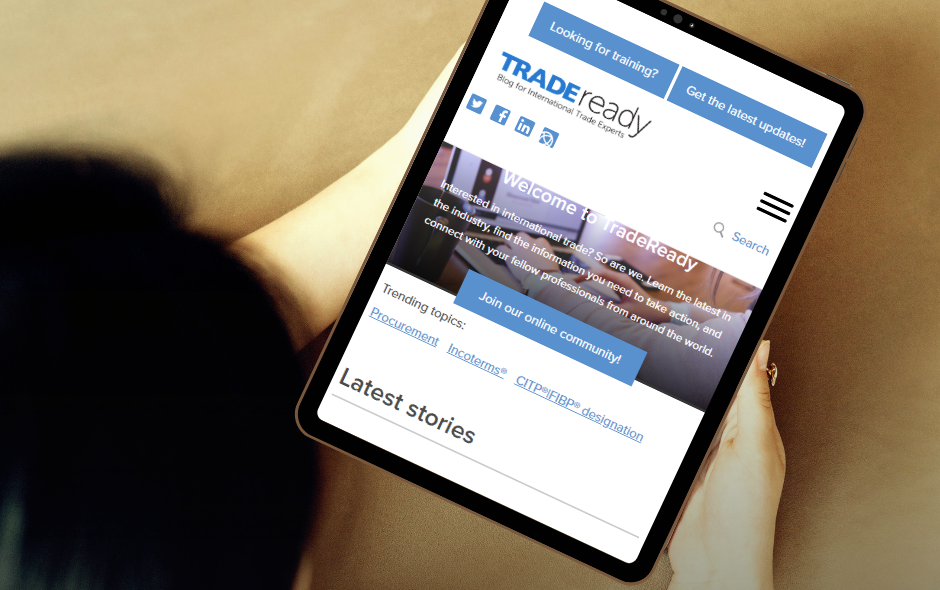The CUSMA trade agreement (formally known as the ‘Canada-United States-Mexico Agreement’) aims to create a more balanced and equitable trading environment and support well-paying production jobs among the three nations.
It is often referred to as ‘NAFTA 2.0’ because it addresses several concerns that led many people to consider the North American Free Trade Agreement (NAFTA) as having shortcomings in certain areas, including job losses and increased trade deficits in the U.S. and Canada.
How does CUSMA benefit Canada? CUSMA strengthens Canada’s trade relationships with the U.S. and Mexico, ensuring preferential access to these crucial neighbouring markets. It also includes provisions to protect Canadian industries, improve labour rights, and enforce environmental protections, which are vital for the sustainable growth of the Canadian economy.
The CUSMA form, also known as the CUSMA certification of origin, is a document used to certify that the goods being exported from one member country to another meet the requirements of the agreement to qualify for preferential tariff treatment. It is one of the essential documents required for trading between Canada, the United States, and Mexico, ensuring smoother trade flows and compliance with the agreement’s provisions.
Who Needs the CUSMA Form?
The CUSMA form needs to be completed by the exporter of the goods. If the exporter is not the producer of the goods, the form can also be completed by the producer or, in certain circumstances, the importer. It is crucial to complete this form because it certifies that the goods being exported meet the criteria outlined in the CUSMA agreement for preferential tariff treatment.
CUSMA outlines nine mandatory elements that must be included in the certification. These include details such as the certifier, exporter, producer, importer, description of goods, Harmonized System tariff classification, origin criteria, and blanket period. The certification of origin does not need to be provided in paper form and can be submitted electronically with a digital signature–this can simplify the process and reduce paperwork for businesses.
Benefits of the CUSMA Form
Incorrectly certifying a product’s origin or failing to maintain the necessary records can result in fines, penalties, and a denial of preferential tariff treatment for those goods. Therefore, it is critical for the certifier to have a good understanding of the CUSMA rules of origin and the necessary documentation to support their certification to reap the benefits it offers.
Preferential Tariff Treatment
One of the significant benefits of completing the CUSMA form is that it helps businesses obtain preferential tariff treatment for their goods. This means that if the goods meet the specific criteria outlined in the CUSMA agreement, they may be subject to lower or zero tariffs when traded between member countries.
Facilitation of Trade
The CUSMA form facilitates trade by clearly defining the criteria that goods must meet to qualify for preferential treatment. This helps businesses understand the requirements and allows customs authorities to verify the goods’ eligibility for preferential treatment.
Increased Transparency
The CUSMA form requires detailed information about the goods being exported, including their origin, producer, and tariff classification. This helps increase transparency in trade transactions and ensures that all parties involved have accurate and complete information.
Dispute Resolution
CUSMA includes provisions for resolving trade disputes between member countries. Having a standardized form like the CUSMA form, which outlines the criteria for preferential tariff treatment, helps reduce the likelihood of disputes arising due to misunderstandings or misinformation.
Protection of Domestic Industries
CUSMA includes provisions to protect domestic industries in member countries by ensuring that only goods that meet specific criteria receive preferential tariff treatment. This helps protect domestic industries from being undercut by cheaper imports that do not meet the standards outlined in the CUSMA agreement.
Tips for Completing the CUSMA Form
Here are some elements to keep in mind when completing the CUSMA form:
Know the Rules of Origin
The rules of origin are the criteria used to qualify the source of a product or service. Understanding these rules and how they apply to your goods is essential. For example, if your product is assembled in one country, but the materials are sourced from another, you will need to know if it still qualifies for preferential treatment under the CUSMA rules of origin.
Keep Supporting Documentation
The exporter, producer, or importer must maintain all records related to the origin of the goods for a minimum of five years from the date the certification was issued. Failure to keep the necessary documentation may result in penalties or denial of preferential tariff treatment.
Self-Certification
Unlike other trade agreements that require a certificate of origin issued by a government authority or a chamber of commerce, CUSMA allows self-certification. This means that the exporter, producer, or importer can certify that the goods qualify as originating under the CUSMA rules of origin.
Be Aware of Expiry Dates
The certification is valid for one year from the date it was issued. Make sure to renew the certification as necessary.






disqus comments